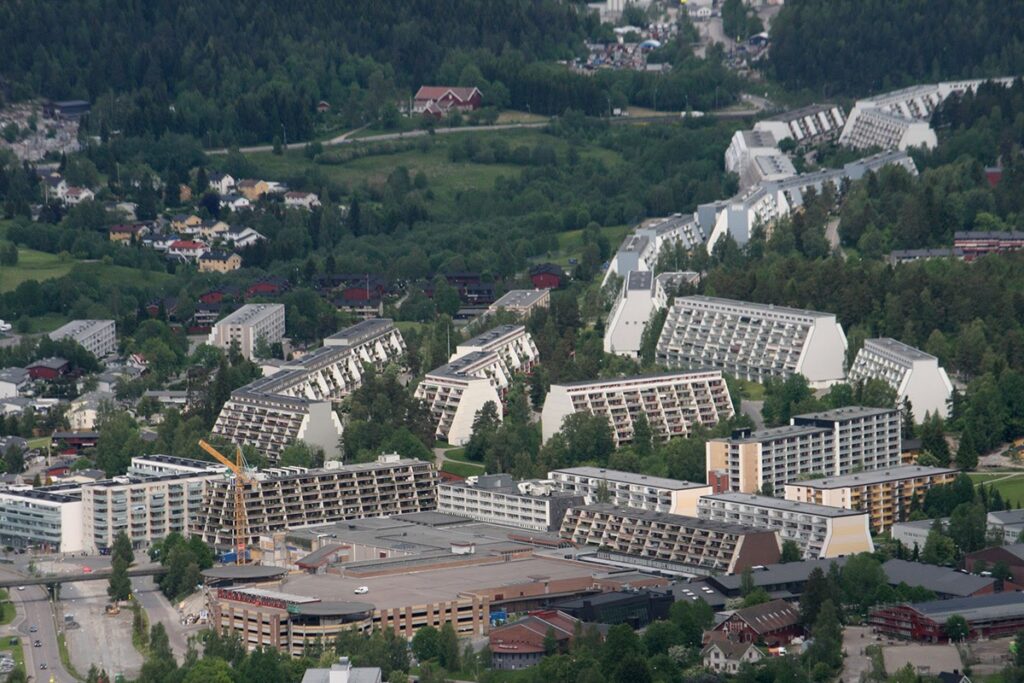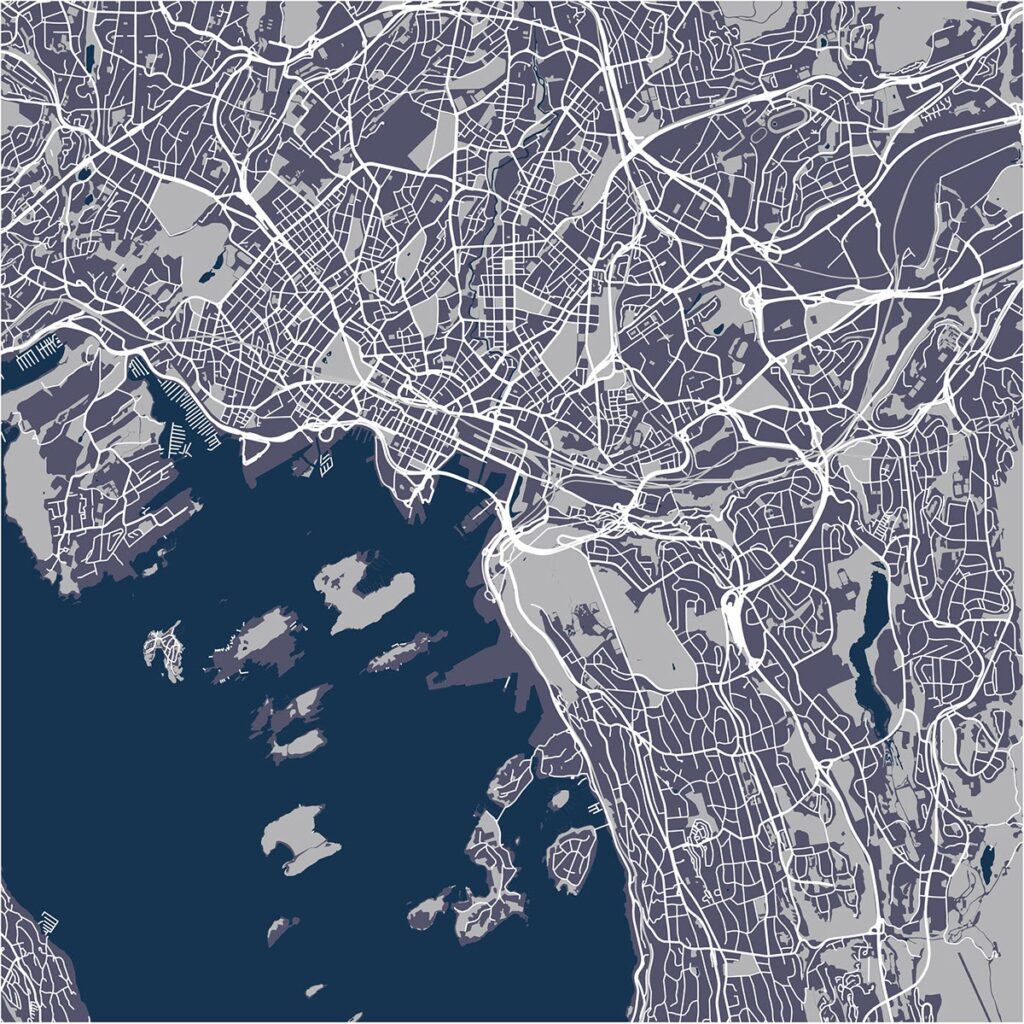Norway is famous for its dialects. However, there is a way of speaking in Oslo that is a little different from the others. Let us introduce you to kebabnorsk.
Oslo is home to fantastic fjords and amazing architecture, but it also has a range of cultural experiences on offer.

For history enthusiasts, Oslo has countless museums like the Akershus Fortress, the Norwegian Museum of Cultural History, and the Viking Ship Museum. For art lovers, it has the National Museum, which is due to re-open in 2021 and will house famous artwork such as Edvard Munch’s The Scream.
For foodies, there’s Mathallen (the Food Hall) in Vulkan, Oslo Street Food on Torggata, and Vippa by the Oslo fjord.
What is lesser known – but hardly surprising – is that Oslo also has a rich cultural diversity, particularly in the East. And there’s no better example of this than kebabnorsk.
What is kebabnorsk?
Kebabnorsk (kebab Norwegian) is a form of spoken Norwegian used by young people in East Oslo. It is a multiethnolect, which means that speakers mix the majority language with multiple other minority languages.
In kebabnorsk, the majority language is Norwegian and the minority languages include (but are not limited to) Arabic, Turkish, Kurdish, Berber, Persian and Punjabi.
The most obvious features that multiethnolect users borrow from the other languages is vocabulary. Many languages have words that originally come from other languages, known as “loanwords”.

For example, English has “pyjamas” (Hindu/Urdu), “music” (French) and “glitter” (Old Norse). Norwegian loanwords include “sofa” (sofa – Arabic), “abonnement” (subscription – German) and “paraply” (umbrella – French).
Read more: Nordnorsk: The Dialect of Northern Norway
The difference between these loanwords and loanwords used in multiethnolects is that they have been accepted as part of the language: they are no longer considered foreign. However, multiethnolect loanwords can also become accepted if they are used and recognised by enough speakers. For example, “wolla” (from the Arabic “wallah”, meaning “I swear”) can be found in det Norske Akademis Ordbok (NAOB).
While kebabnorsk is only found in Norway, multiethnolects are very common among young people in cities throughout Europe (and probably the world), particularly in multicultural areas.
The history of kebabnorsk
The languages used in kebabnorsk first came to Norway towards the end of the 1960s, when there was a marked increase in non-western immigration to Oslo – particularly to East Oslo.
However, kebabnorsk as a language variant did not attract much public attention until 2005, when Andreas E. Østby released his “Kebabnorsk ordbok” (kebabnorsk dictionary).
The word “kebabnorsk” was coined by the Norwegian media in the 1990s as an adaptation of “kebabsvenska” (kebab Swedish), which was used to describe a similar language variant in Sweden. It does not come from kebabnorsk speakers.

Because of this, some kebabnorsk speakers view the name as derogatory and prefer to call it other names, such as “holmliansk norsk” (Holmlia Norwegian) or “gate språk” (street language).
Examples of kebabnorsk
As kebabnorsk is only a spoken language (although this is changing), it develops a lot quicker than other forms of language. Words used in kebabnorsk today may not be the same words in a few years’ time. However, some current examples of kebabnorsk include:
Kebabnorsk word | Language of origin | Norwegian translation | English translation |
Avor | Berber/Persian/Kurdish | Å stikke/dra | To go/leave |
Flos | Arabic | Penger | Money |
Kæbe | Arabic | Jente | Girl |
Schpa | Berber | Bra | Good |
Sjofe | Arabic | Å se | To see |
Is kebabnorsk slang?
As kebabnorsk is a spoken form of language used by young people, kebabnorsk is often referred to as a form of slang. However, this is not quite right, as slang tends to only refer to different vocabulary, while multiethnolects can also feature different grammar and pronunciation.
In addition, Norwegian slang also contains words from “anglonorsk” (English Norwegian) and “salsanorsk” (Spanish Norwegian), as well as words adapted from “standard” Norwegian itself.
Slang word | Norwegian translation | English translation | |
Norsk (Norwegian) | Å sigge | Å røyke (sigaretter) | To smoke (cigarettes) |
Anglonorsk | Å joine | Å bli med | To join |
Salsanorsk | En chico/chica | gutt/jente | boy/girl |
While anglonorsk and salsanorsk also mix Norwegian with other languages, they differ from kebabnorsk in a few ways. For example, they are examples of ethnolects, wherein only one minority language is mixed with the majority language.
In addition, English and Spanish are western languages and therefore anglonorsk and salsanorsk tend to be viewed differently than kebabnorsk, which only uses non-western languages. Anglonorsk in particular is very accepted in Norway due to the high levels of exposure in Norwegian schools and media.
Is kebabnorsk a dialect?
Norway is famous for its dialectal variation: there is no one “right way” to speak Norwegian. Dialects are often defined as ways of speaking that are connected to one specific place. In Norway, dialects can be so different that Norwegians can struggle to understand each other.
Some people argue that kebabnorsk should also be a dialect, as it is only used in East Oslo. In addition, if kebabnorsk became a dialect, it would gain the same status – and its speakers the same respect – as other dialects and dialect users.
Currently, kebabnorsk is not considered a dialect – however, this may change in the future.
Misconceptions about kebabnorsk
There are a lot of misconceptions surrounding kebabnorsk and the people who speak it. Here are the two main ones:
1. “Only people with a non-western background speak kebabnorsk.”
Kebabnorsk is not solely spoken by people with a non-western background, and you do not have to be a fluent speaker – or even have any knowledge – of the languages used in kebabnorsk to speak kebabnorsk properly. A young, monolingual, ethnic Norwegian is just as capable of speaking kebabnorsk as a young, second-generation Norwegian from a bilingual household.
2. “People who speak kebabnorsk cannot speak proper Norwegian.”
Kebabnorsk speakers are also fluent in Norwegian, and kebabnorsk has no negative impact on their language. This is because kebabnorsk is not “bad Norwegian”: it is a separate form of Norwegian that is used only in certain situations – e.g. among friends, not instead of “standard” Norwegian.
The phenomenon of adjusting your language depending on the situation is called “code-switching” and is not unique to multiethnolect users. In fact, the vast majority of people do this, even if unconsciously.
Most people don’t speak the same way to their boss as they do to their friends. My Norwegian partner can always tell if I’ve been speaking to my friends and family in the UK because I get louder and more southern English (make of that what you will).
Similarly, my partner’s northern Norwegian accent is significantly stronger when we visit his parents in the North than when we are at home in Oslo.
Media in kebabnorsk
Are you interested in hearing some kebabnorsk but can’t get to east Oslo to listen to it in person? Then you’re in luck because kebabnorsk is more popular than ever, and there are plenty of places where you can experience it for yourself:
TV: Kebabnorsk is spoken in the NRK comedy programme “Førstegangstjenesten” (Basic military service) by the character Ola Halvorsen, who grew up in a multicultural environment in Oslo. It was also featured in an episode of the popular programme “Typisk Norsk” (Typical Norwegian), wherein Petter Schjerven investigated different aspects of Norwegian culture.
Music: Kebabnorsk has long been used by underground hip hop groups like Minoritet1. However, it has also been used in songs by internationally recognised groups including Madcon and Karpe Diem.
Books: While kebabnorsk is mainly a spoken language, it is slowly being used in writing too. The book “Alle utlendinger har lukka gardiner” (All the foreigners have closed their curtains) by Maria Navarro Skaranger is written in kebabnorsk, and was recently adapted into a movie.
“Tante Ulrikkes vei” (Aunt Ulrikke’s street) by Zeshan Shakar is also in kebabnorsk and the rights to translate the book into English were bought in 2018.
Keep calm (and let people speak kebabnorsk)
Kebabnorsk is an extremely interesting language form that reflects the diversity and community of young people in East Oslo. It is also misunderstood by the majority of other Norwegians. Unfortunately, this has a real impact on both kebabnorsk speakers and the areas where they live.
For example, one of the reasons that Norwegian parents will move their children out of schools in the East to the West is due to a fear that their children won’t learn “proper” Norwegian (see the second misconception).
Not only does West Oslo have fewer non-western immigrants, but it is also a richer area as a whole, with access to more resources and funding. This leads to schools in the East being underfunded and the youth in the East feeling rejected by Norwegian society. It also fuels further division between “ethnic Norwegians” and “immigrants”.
As language researcher and professor Bente Ailin Svendsen puts it: “Språk er langt mer enn kommunikasjon. Språk er identitet. Språk er makt. Ved å tråkke på språk, tråkker du på menneskene som snakker språket”
In English: “Language is far more than communication. Language is identity. Language is power. When you trample on language, you trample on the people who speak that language.
Do you know of any multiethnolects in your country? Let us know in the comments!


